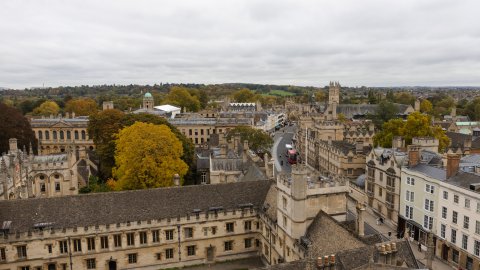"Constructing global solutions to energy supercritical PDEs"
Abstract
"In this talk, we will discuss invariant measures techniques to establish probabilistic global well-posedness for PDEs. We will go over the limitations that the Gibbs measures and the so-called fluctuation-dissipation measures encounter in the context of energy-supercritical PDEs. Then, we will present a new approach combining the two aforementioned methods and apply it to the energy supercritical Schrödinger equations. We will point out other applications as well."
Mean field games with common noise and arbitrary utilities
Abstract
I will introduce a class of mean-field games under forward performance and for general risk preferences. Players interact through competition in fund management, driven by relative performance concerns in an asset diversification setting. This results in a common-noise mean field game. I will present the value and the optimal policies of such games, as well as some concrete examples. I will also discuss the partial information case, i.e.. when the risk premium is not directly observed.
Random Walks on Lie Groups and Diophantine Approximation
Abstract
After a general introduction to the study of random walks on groups, we discuss the relationship between limit theorems for random walks on Lie groups and Diophantine properties of the underlying distribution. Indeed, we will discuss the classical abelian case and more recent results by Bourgain-Gamburd for compact simple Lie groups such as SO(3). If time permits, we discuss some new results for non-compact simple Lie groups such as SL_2(R). We hope to touch on the relevant methods from harmonic analysis, number theory and additive combinatorics. The talk is aimed at a general audience.
Existence of branched coverings of surfaces
Abstract
A branched covering between two surfaces looks like a regular covering map except for finitely many branching points, where some non-trivial ramification may occur. Informally speaking, the existence problem asks whether we can find a branched covering with prescribed behaviour around its branching points.
A variety of techniques have historically been employed to tackle this problem, ranging from studying representations of surface groups into symmetric groups to drawing "dessins d'enfant" on the covering surface. After introducing these techniques and explaining how they can be applied to the existence problem, I will briefly present a conjecture unexpectedly relating branched coverings and prime numbers.
Pseudo-Anosov flows on 3-manifolds
Abstract
This will be a gentle introduction to the theory of pseudo-Anosov flows on 3-manifolds, as seen from the perspective of a topologist and not a dynamicist.
I will start by considering geodesic flows on the unit tangent bundles of hyperbolic surfaces. This will lead to a definition of an Anosov and then a pseudo-Anosov flow on a 3-manifold. After discussing a couple of examples, I will outline some connections between pseudo-Anosov flows and other aspects of 3-manifold topology/ geometry/ group theory.
Acylindrical hyperbolicity via mapping class groups
Abstract
We will give a fairly self contained introduction to acylindrically hyperbolic groups, using mapping class groups as a motivating example. This will be a mainly expository talk, the aim is to make my topology seminar talk in week 5 more accessible to people who are less familiar with these topics.
Refinements of G2 structures
Note the unusual time 13:00.
Abstract
G2 structure manifolds are a key ingredient in supersymmetric compactifications on seven-manifolds. We will discuss the fact that G2 structure manifolds admit refinements in the form of almost contact (3-) structures. In fact, there are infinite dimensional spaces of these structures. We will discuss topological and differential geometric aspects of (the space of) these refinements. We will then explore applications in physics, including supersymmetry enhancement. This is based on 2101.12605.


